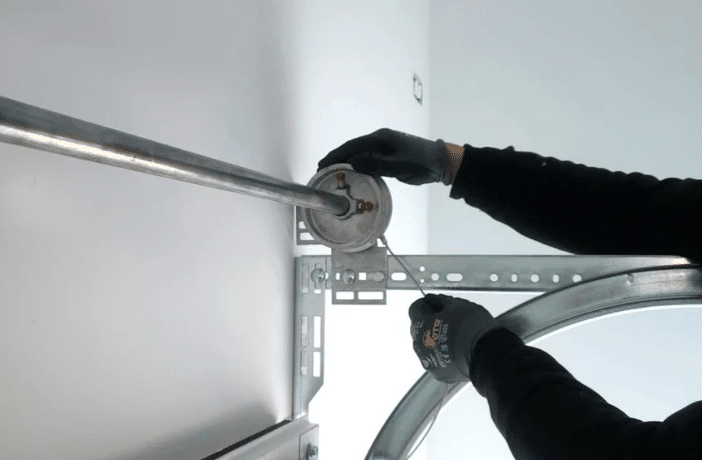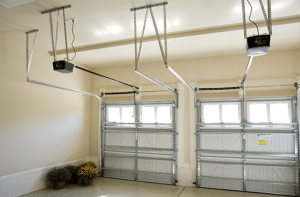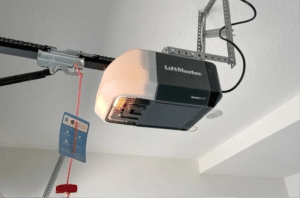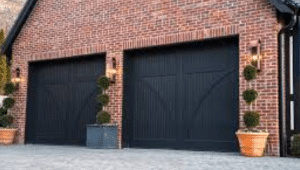Step-by-step guide on how to change a garage door cable when it breaks or loosens. Stay safe and get your door working again fast.
Garage door cables are a critical component of your garage door system. When they snap or loosen, they can prevent the door from opening or closing correctly, and attempting to operate it in this state may cause additional damage or lead to safety risks.
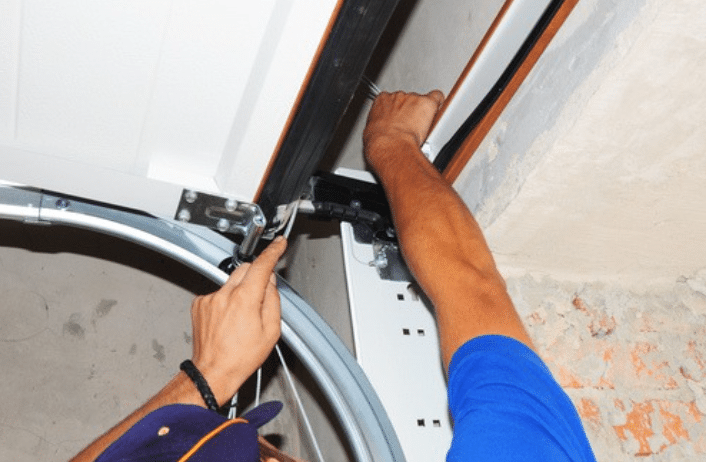
Understanding how to change a garage door cable is essential for homeowners who want to efficiently manage their garage door systems or determine when to call a technician. While this task might seem straightforward, it involves tension and mechanical components that require caution.
This blog will walk you through the common reasons garage door cables snap or loosen, how the process of replacement works, and whether it’s a job for DIY or professional repair. We’ll also share helpful maintenance tips to avoid future issues.
Why Garage Door Cables Snap or Loosen
When a cable snaps or becomes loose, it can create serious safety hazards and cause your garage door to malfunction. Below are some of the most common reasons garage door cables fail, organized for clarity.
Normal Wear and Tear
Repeated Usage Over Time
Garage doors are opened and closed multiple times a day, especially in busy households or commercial settings. This continuous motion places significant strain on the cables. Over the years, the metal strands within the cables can fray or weaken, leading to eventual breakage.
Environmental Stress
Temperature fluctuations can cause metal cables to expand and contract, contributing to material fatigue. Combined with daily use, this thermal cycling can accelerate the aging process of the cables.
Friction Against Other Components
Cables may rub against misaligned pulleys, brackets, or other hardware. Over time, this friction can wear down the cable’s outer layers, reducing its strength and integrity.
Misalignment or Poor Installation
Incorrect Cable Routing
If cables are not aligned properly on the drum or through the pulley system, they may twist, bind, or even slip off. Misalignment places uneven tension on the cables, increasing the risk of failure.
Improper Tensioning
Garage door cables must be set to the correct tension to function properly. If the cables are too tight, they can snap under stress; if too loose, they may slip off the drum or tangle.
Inexperienced or DIY Installations
Improper installation by untrained individuals can lead to early cable failure. Professional installation ensures cables are routed, tensioned, and secured according to manufacturer specifications.
Rust and Corrosion
Exposure to Moisture and Humidity
In areas with high humidity or where the garage is poorly sealed, steel cables are particularly vulnerable to rust. Once corrosion begins, it weakens the cable strands and compromises their ability to bear loads.
Lack of Maintenance
Regular inspections and occasional lubrication can help prevent rust. Without proper upkeep, moisture and dirt can build up, hastening corrosion and cable deterioration.
Coastal or Harsh Climates
Homes near the ocean or in regions with frequent rain and snow are more susceptible to rust-related cable issues. Salt in the air or on the ground can accelerate the corrosion process dramatically.
Spring Failure
Uneven Tension from Broken Springs
Garage door springs are designed to balance the weight of the door. When a spring breaks or loses tension, the cables are forced to carry more weight than they were intended to. This often results in one or both cables snapping or slipping off the track.
Asymmetrical Force Distribution
If only one spring fails or becomes weaker than the other, it causes an uneven pull on the cables. This imbalance leads to one side of the door rising faster or slower than the other, stressing the cables unevenly.
Sudden Spring Snap
When a torsion or extension spring breaks suddenly, the sudden loss of force balance can whip or jerk the cables violently, often resulting in immediate cable failure.
Step-by-Step Guide: How to Change Garage Door Cable
⚠️ Warning: Garage door cables are under high tension and can cause serious injury if mishandled. If you are unsure or lack proper tools and experience, it is highly recommended to contact a professional garage door technician.
Step 1: Disconnect the Power
Unplug the Opener
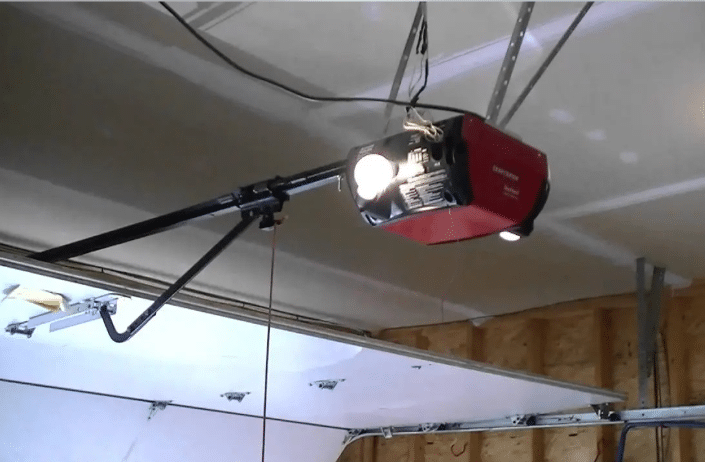
Before doing any work, ensure your safety by unplugging the automatic garage door opener. This prevents accidental activation during the repair process.
Disengage the Door
Pull the emergency release cord (usually a red cord hanging from the trolley) to disconnect the door from the motor mechanism. This allows you to operate the door manually and avoid unexpected movement.
Step 2: Secure the Door in Place
Lock the Door in Position
Use C-clamps or locking pliers to secure the garage door onto the vertical tracks, just above the bottom roller. This prevents the door from sliding down or shifting while you’re working, ensuring your safety.
Step 3: Remove the Old Cable
Release Spring Tension (if necessary)
If your door uses torsion springs, you’ll need to carefully relieve the tension using winding bars and a proper technique. This step is critical—incorrect handling can lead to injury.
⚠️ Important: Only proceed with this step if you fully understand torsion spring mechanics. Otherwise, skip spring adjustments and call a professional.
Detach the Damaged Cable
Locate the broken or loose cable and remove it from:
- The cable drum is near the top of the door.
- The bottom bracket is at the bottom corner of the door.
Remove any remaining tension from the cable and unwind it carefully from the drum.
Step 4: Install the New Cable
Attach to Bottom Bracket
Secure one end of the new cable to the bottom bracket pin or hook. Ensure the connection is tight and properly seated in its mounting hole or slot.
Wrap Around the Drum
Guide the cable up along the side of the door and carefully wrap it around the cable drum, making sure it:
- Aligns smoothly in the drum’s grooves.
- Winds evenly without kinks or slack.
Repeat this process on both sides if replacing both cables.
Step 5: Re-Tension and Test the Door
Reapply Tension to the Springs
If you had to release the tension from torsion springs, use winding bars to reapply it evenly on both sides, following the manufacturer’s specifications for turns and torque.
For extension springs, you may need to reconnect the safety cables and stretch the springs to their proper tension with the door closed.
Test Manual Operation
Carefully remove the clamps and manually lift the garage door. Check that:
- The door moves smoothly without sticking or slamming shut.
- Both sides lift evenly.
Reconnect the Opener
Once satisfied with the door’s manual performance, re-engage the emergency release and plug the opener back in. Run the door through an automatic cycle to confirm proper function.
Safety Tips for Handling Garage Door Cables
- Always wear gloves and safety glasses.
- Never remove or adjust torsion springs without proper tools and training.
- Do not work on cables while the garage door is raised unless it is securely clamped.
- Use only high-quality replacement cables approved for your garage door system.
Preventive Maintenance for Garage Door Cables
Regular Inspections
Inspect the cables for signs of fraying, rust, or slack every few months.
Lubrication
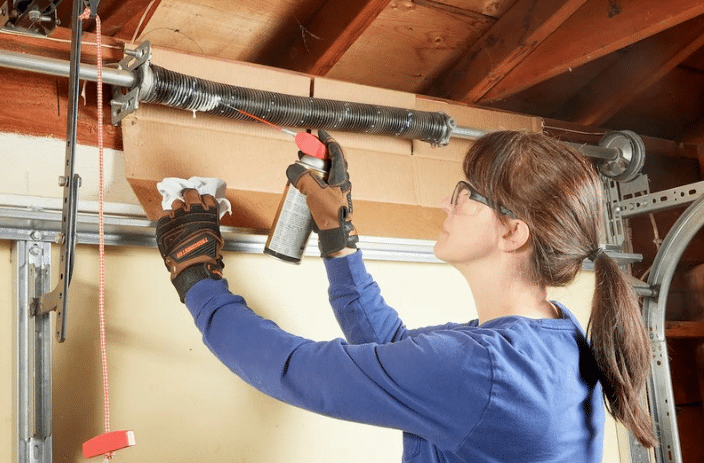
Use a silicone-based spray to reduce friction where the cable wraps around the drum.
Balance Checks
Test your garage door balance monthly to ensure the cables and springs distribute weight evenly.
Frequently Asked Questions
Should garage door cables be lubricated?
Garage door cables should not be lubricated because they must properly grip the pulleys and drums. Lubrication can make them slip or wear out faster. Instead, focus on keeping them clean and free from rust or fraying.
How do I get the cable back on my garage door?
To get the cable back on, disconnect the opener and fully close the door to relieve tension. Then, manually wind the cable around the drum at the top of the door while ensuring it’s seated in the grooves. Always use caution or contact a professional, as high tension can be dangerous.
How often should you replace garage door cables?
Garage door cables should be replaced every 8 to 15 years, depending on usage and environmental conditions. They should be replaced sooner if they show signs of fraying, rust, or slack. Regular inspections help catch problems early.
What is the purpose of garage door cables?
Garage door cables work with the locking system to help lift and lower the door smoothly. They transfer energy from the springs to the door, keeping it balanced during movement. They are essential for the safe and controlled operation of the garage door.
How to tell if the garage door cable is bad?
A bad garage door cable may appear frayed, rusted, or have visible slack. You might notice uneven door movement, the door getting stuck, or the system being noisier than usual. If the cable has snapped or slipped off, the door may not open at all.
Conclusion
Garage door cables play a vital role in your garage system’s safe and balanced operation. When they break or become loose, it’s important to act quickly to avoid further damage. Knowing how to change garage door cables and when to seek professional help can save you time and money.
If you have a snapped or loose cable, don’t ignore it. Addressing the issue promptly helps keep your door system in a safe working condition. While some cable replacements are manageable, others are best left to professionals.
Roadrunner Garage Doors is ready to help with reliable garage door cable repair or full replacement. Contact us today for expert service backed by years of experience.
End Note
Roadrunner Garage Doors provides exceptional garage door repair and maintenance, focusing on safety, reliability, and long-term performance. Our reputation for outstanding customer service brings unmatched workmanship to every service call.
Whether you’re in Dallas, Frisco, Houston, or Missouri City, we’re just a call away. We also serve Austin and the surrounding areas.
Learn more about us, browse our photo gallery, or check out the latest posts on our blog. Follow us on Facebook, Twitter, and YouTube for tips, updates, and garage door knowledge.
Roadrunner Garage Doors
8616 4th Street, Frisco TX 75034
+17134738168

